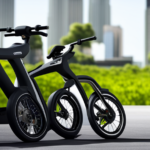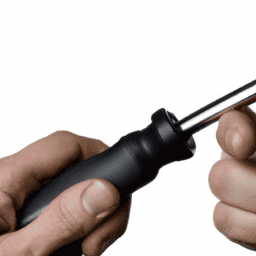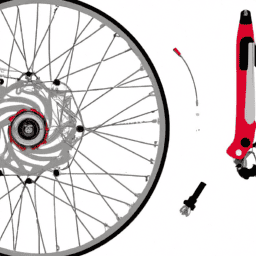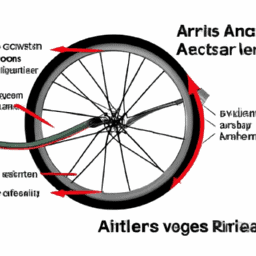So, you’ve recently gotten yourself an electric bike and are curious about how to charge it? It’s straightforward to charge the battery of your electric bike. However, it’s essential to comprehend your battery and learn ways to prolong its lifespan.
In this article, we’ll guide you through the steps of charging your electric bike battery, explain the basics of battery technology, and provide expert tips to optimize your bike’s performance.
First and foremost, it’s important to understand that electric bike batteries come in various shapes, sizes, and capacities. The most common type of battery used in electric bikes is a lithium-ion battery, which is lightweight, efficient, and long-lasting. However, different manufacturers may use different types of batteries, so it’s crucial to read the manual that came with your bike and familiarize yourself with the specifics of your battery.
In the following sections, we’ll explore the steps of charging your electric bike battery, and provide tips to ensure you’re charging it correctly to extend its life and optimize its performance.
Key Takeaways
- Proper battery maintenance is crucial for longevity.
- Different charging methods are available, including portable chargers, charging stations, and home charging.
- Using the correct charger and avoiding extreme temperatures is essential.
- To maximize range and get the most out of your e-bike, maintain the battery by storing it in a cool, dry place, charging it between 20% and 80%, and cleaning contacts regularly.
Understanding Your Electric Bike Battery
You’re probably wondering how to charge your electric bike battery, but don’t worry, it’s as easy as plugging it in like your phone!
Before you start charging, it’s important to understand your electric bike battery. Battery maintenance is crucial for the longevity of your battery, and it’s important to keep it in good condition to ensure it lasts as long as possible. A well-maintained battery can last anywhere from 2-5 years, depending on usage and storage.
However, if you notice that your battery isn’t holding a charge like it used to, it may be time for a battery replacement. This is a common issue with electric bike batteries, and it’s important to address it as soon as possible to prevent any further damage.
Now that you understand the importance of battery maintenance and replacement, let’s move on to the next section about charging your electric bike battery.
Charging Your Electric Bike Battery
When it comes to charging your electric bike battery, there are a few key points to keep in mind. First and foremost, the charging time can vary depending on the size and type of your battery.
Additionally, it’s important to understand the different charging methods available and which one is best suited for your particular battery.
Finally, following best practices for charging, such as avoiding overcharging and using the correct charger, can help prolong the life of your battery and ensure optimal performance.
Charging Time and Methods
To get your electric bicycle ready for your next adventure, it’s important to know the best charging methods and how long it will take to get a full battery. There are different charging times and methods you can use for your electric bike, depending on your needs.
Here are three examples:
-
Portable chargers: These are small, lightweight devices that can charge your electric bike’s battery on the go. They’re perfect for traveling or when you don’t have access to a charging station.
-
Charging stations: These are typically found in public spaces such as parks, malls, or bike lanes. They offer a fast and reliable way to charge your electric bike’s battery, and some even come with free charging options.
-
Home charging: This is the most convenient and cost-effective way to charge your electric bike. You can plug it in overnight and wake up to a fully charged battery the next day.
Knowing the best charging time and method for your electric bike can help you extend its battery life and ensure a safe and enjoyable ride. In the next section, we’ll discuss some best practices for charging your electric bike’s battery.
Best Practices for Charging
Maximizing your e-bike’s battery life requires following some simple charging practices that can keep your bike juiced up for longer periods of time. First, charging etiquette is important. It’s essential to use the correct charger that came with your bike. Using a different charger can cause damage to the battery, and it may not charge correctly. Similarly, avoid charging your bike in extreme temperatures, as this can also damage the battery.
Second, battery storage is critical. If you’re not using your e-bike for an extended period, store the battery in a cool, dry place, ideally at around 60% charge. Over time, a battery will naturally lose its charge, so it’s essential to charge it every few months to maintain its health. Additionally, avoid overcharging the battery, as this can cause damage, and never let the battery go completely dead. By following these simple charging practices, you can help extend the life of your e-bike battery and get the most out of your ride.
By following the best practices for charging, you can help extend your battery life. However, there are additional steps you can take to maximize your battery’s capacity, such as monitoring your power usage and adjusting your riding style.
Extending Your Battery Life
One way to get more out of your electric bike’s battery is by avoiding sudden and unnecessary acceleration. Maximizing range can be achieved by accelerating gradually and maintaining a steady speed. This not only conserves energy, but also helps avoid wear and tear on your bike’s components.
Another strategy for extending your battery life is through proper battery maintenance. Here are a few tips to keep in mind:
- Store your battery in a cool, dry place away from direct sunlight.
- Keep your battery charged between 20% and 80% to avoid overcharging or deep discharge.
- Regularly clean the battery contacts with a dry cloth to prevent corrosion.
By following these practices, you can ensure that your electric bike’s battery lasts longer and performs at its best.
Troubleshooting common charging issues can also help you avoid potential problems and maintain your bike’s battery life.
Troubleshooting Common Charging Issues
Now that you know how to extend your battery life, it’s important to understand how to troubleshoot any common charging issues that may arise.
One of the most common issues is a faulty charger. If your charger isn’t working properly, it won’t be able to charge your battery to its full capacity. To ensure that your charger is functioning properly, check for any frayed wires or loose connections. If you notice any damage, replace your charger immediately.
Another common issue is battery compatibility. Not all batteries are created equal, and using the wrong type of battery can cause damage to your electric bicycle. Before purchasing a new battery, make sure it’s compatible with your bicycle’s charging system. If you’re unsure, consult with a professional or refer to your bicycle’s manual.
By troubleshooting these common charging issues, you can ensure that your electric bicycle remains in top condition for years to come.
Now that you know how to troubleshoot common charging issues, let’s move on to some tips for optimal performance.
Tips for Optimal Performance
To get the most out of your e-bike, it’s crucial to implement these simple yet effective tips for optimal performance. By following these tips, you can ensure that your e-bike performs at its best and that you get the most out of your investment. Here are five tips to help you maximize range and maintain your battery:
-
Keep your battery charged: Make sure to charge your battery after every ride or at least once a week, even if you haven’t used your e-bike. This will help maintain the battery’s life and ensure that it’s ready to go when you need it.
-
Store your e-bike properly: If you’re not using your e-bike for an extended period, store it in a cool, dry place and keep the battery charged. This will help maintain the battery’s life and ensure that it’s ready to go when you’re ready to ride.
-
Use the right mode: Most e-bikes have different modes that you can use to conserve battery life or increase power output. Use the appropriate mode for your needs to maximize range and get the most out of your battery.
-
Monitor your battery level: Keep an eye on your battery level and plan your rides accordingly. If you’re running low on battery, consider using a more efficient mode or taking a shorter route to conserve power.
-
Maintain your battery: Follow the manufacturer’s instructions for battery maintenance, such as cleaning the contacts and keeping the battery dry. This will help extend the life of your battery and ensure that it performs at its best.
Frequently Asked Questions
How long does it take to fully charge an electric bicycle battery?
To fully charge an electric bicycle battery, the charging time will depend on the battery’s capacity, charger output, and charging method. On average, it may take 4-6 hours for a full charge, which can provide a range of 20-100 miles depending on the battery life.
Can you overcharge an electric bicycle battery?
"Don’t cry over spilt milk, but do prevent battery damage by following best charging practices. Overcharging an electric bicycle battery can cause irreversible damage, so make sure to unplug it once fully charged." ‘Additionally, avoid charging the battery in extreme temperatures, and use the charger that came with the bike to ensure the right voltage and current are being delivered.’
Can I use a regular outlet to charge my electric bicycle battery?
Yes, you can use a regular outlet to charge your electric bicycle battery. This is especially useful when charging electric bicycles on the go. Just make sure to use a reliable charger and avoid overcharging to prolong the battery’s lifespan.
How many miles can I ride on a fully charged electric bicycle battery?
Imagine cruising on a fully charged electric bicycle battery like a bird soaring through the skies. Depending on the terrain impact and pedal assist options, you can travel up to 100 miles at a maximum speed of 20 mph with a battery life of 4-6 hours.
Is it safe to charge an electric bicycle battery indoors?
Charging an electric bicycle battery indoors can be safe as long as you follow proper guidelines. However, it is important to be aware of potential fire hazards and take necessary precautions such as using a fire-resistant charging bag and never leaving the battery unattended while charging.
Conclusion
Congratulations, you’ve successfully learned how to charge your electric bicycle! By understanding the capacity of your battery and following the recommended charging guidelines, you can ensure that your e-bike is always ready for your next adventure.
To optimize your battery life, try to avoid deep discharges and keep your battery at a moderate temperature. Troubleshooting common charging issues such as loose connections and faulty chargers can also help prolong the life of your battery.
Remember, proper maintenance is key to getting the most out of your e-bike. By following these tips for optimal performance, you can enjoy a smooth and efficient ride every time.
So go ahead, charge up and hit the road with the power of your electric bicycle!
















